Knowledge journal / Edition 2 / 2017
Passive sampling provides better insight into emissions of pharmaceuticals
The passive sampling method provides a better and time-integrated picture of emissions of pharmaceutical residues into waste water.
The presence of pharmaceutical residues in the environment is high on the political agenda. Parties from both the healthcare and water sectors under the leadership of the Ministry of Infrastructure and Water Management are therefore working together on the chain initiative ‘Pharmaceutical residues out of water’1.
This chain initiative is examining possible measures throughout the pharmaceuticals chain, such as measures in the development, approval, prescription and use of medicines or what the best locations are to modify sewage treatment plants (the ‘hotspot analysis’). Good insight into the emissions, fate and transport of pharmaceutical residues through the chain is essential in order to make an informed assessment of measures.
Conventional sampling with random samples provides a limited picture of the actual concentrations in the environment, particularly for substances with an irregular emission pattern. This can lead to the wrong conclusions being drawn, and ultimately to less effective steps being taken. One solution is to increase the monitoring frequency, but this often involves undesirable high costs.
In order to gain better insight into their emissions of pharmaceutical residues and the relative contribution to the total load on the sewage treatment plant, two academic hospitals in conjunction with Deltares have applied the passive sampling method. An absorbens is thereby placed in the relevant environmental compartment, in this case the waste water in various locations in the sewers. The substances present in the waste water are absorbed by the material, and after a specified period the passive sampler is removed from the waste water, extracted and analysed. This creates a time-integrated picture of the concentrations of substances in the waste water, and no substances are ‘missed’ any more. The detection limit is also reduced, because more than one litre of water is often sampled using the samplers. This sampled volume is particular dependent on the duration of the sampling, the flow speed in the sewer and the physical chemical properties of the substance.
About passive sampling
There are 2 different types of passive samplers: partition samplers and absorption samplers. With partition samplers, such as silicon rubber, the concentration of a substance on the sampler can reach equilibrium with the water phase provided that it is exposed long enough. This characteristic makes it possible to convert the concentration on the sampler to a time-integrated concentration in the water phase. This type of sampler is mainly suitable for hydrophobic substances. Since pharmaceuticals are generally fairly hydrophilic,the Speedisk® - an absorption sampler - was chosen for this study. The substances thereby bond to an absorption material and are hardly released again, which makes it harder to translate the concentrations on the sampler to the concentrations in the water phase. The calculated concentrations in this study are therefore indicative. More information about passive sampling and possible applications can be found in De Weert & Smedes (2014)2.
Material & Methods
In this study Speedisks were deployed in the sewer for a week and half at the effluent from the Radboudumc in Nijmegen and the University Medical Center (UMC) in Utrecht and at the influent and effluent of the sewage treatment plant in Nijmegen and Utrecht. The samplers were then extracted and analysed in the laboratories of TNO, Deltares’ partner in Utrecht Castel. In order to have an analysis package available which was as relevant as possible, the list of 'standard’ pharmaceuticals was supplemented with relevant substances derived from an analysis of the hospital pharmacy’s dispensing list. The final analysis package consisted of 80 pharmaceuticals, divided across the categories of antibiotics, contrast media, cytostatics, analgesics, beta-blockers, cholesterol inhibitors, antifungal products and other. This latter category includes the anti-epileptic drug carbamazepine, the diabetic drug metformin, but also ritalinic acid, the most important decomposition product of the psychostimulant ritalin.
Earlier projects have shown how much water the speedisk approximately samples per day on average. This quantity was used in order to convert the analysed concentrations on the samplers to indicative concentrations in the water phase. In order to determine the relevance of the hospital’s emissions with respect to the sewage treatment plant’s total load, the concentrations were converted to loads using flow data from the hospital and the sewage treatment plant. Removal yields for the pharmaceuticals found were calculated on the basis of concentrations in the sewage treatment plant’s influent and effluent. A combination of these two results provides a list of environmentally relevant pharmaceuticals for which the hospital is an important source.
Results
A comparison of the results from this study with results from grab samples from previous studies at the same sewage treatment plants shows that more pharmaceuticals were found on the passive samplers. Generally the estimated concentrations in the hospital’s effluent are many times higher for all substance groups than in the sewage treatment plant’s influent. An example for the group of antibiotics can be seen in figure 1.
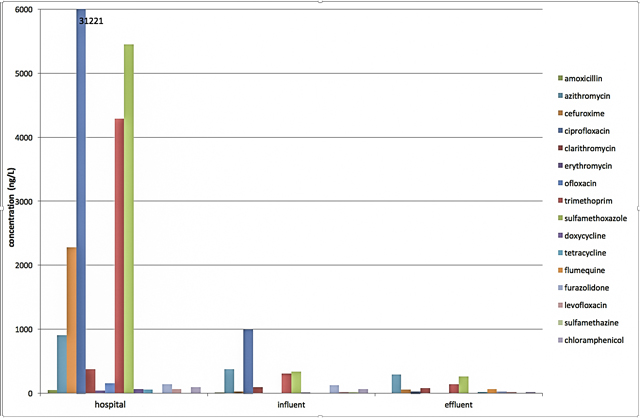 Figure 1: Calculated concentrations of antibiotics in the water phase at various locations in the sewer.
Figure 1: Calculated concentrations of antibiotics in the water phase at various locations in the sewer.
The load calculations show that the hospitals are a relevant source AT the sewage treatment Plantfor a limited number of substances, caused by the relatively limited flow from the hospitals compared to the total flow to the sewage treatment plant, see figure 2 for the same group of antibiotics.
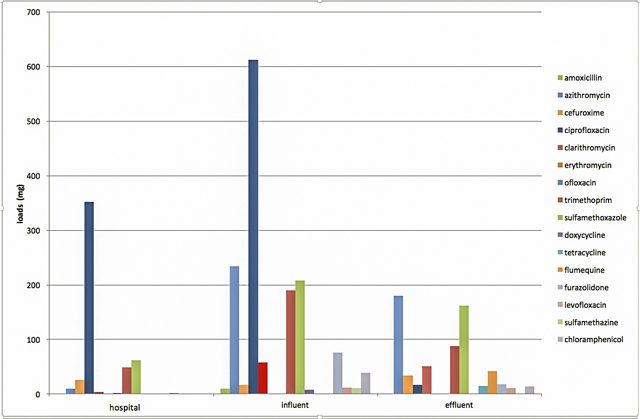 Figure 2: Calculated loads of antibiotics in various concentrations in the sewer.
Figure 2: Calculated loads of antibiotics in various concentrations in the sewer.
The emissions of pharmaceutical residues at the sewage treatment plant mainly originate from sources other than hospitals, whereby households are the main source. This can particularly be seen for beta-blockers, cholesterol inhibitors, fungicides, a number of analgesics and antibiotics and carbamazepine. The substances with a substantial hospital share of the sewage treatment plant’s total load are the contrast media, the painkillers paracetamol and lidocaine, the plasticiser Bisphenol A and a number of antibiotics. The hospital’s share of the sewage treatment plant’s load in Nijmegen over the sample period was greater than in Utrecht, caused by the higher concentrations of pharmaceutical residues on the passive samplers. The flows for both the hospitals and the sewage treatment plants are comparable in both cities.
Notable for the radiocontrast agents and - to a lesser degree - for the antibiotics is thatit concerns different substances at both hospitals, and that for the radiocontrast agents these also differ from the substance that was found in another study3. Every hospital makes its own decision in the choice of products, which is an important aspect when compiling an analysis package.
As in previous studies, a large difference was found in the removal efficiency between pharmaceuticals, even when they are part of the same group. Hence the analgesic paracetamol is completely removed at the sewage treatment plant, whilst another analgesic, diclofenac, shows hardly no reduction in the sewage treatment plant. Combined with the hospital share, this results in a group of hospital-relevant substances which are not removed well, namely the contrast media, and to a lesser extent the analgesic lidocaine, the plasticiser bisphenol A and the antibiotic trimethoprim. For other sources - particularly households - it is especially the beta-blockers, cholesterol inhibitors, the painkiller diclofenac and carbamazepine that make an important contribution to emissions to the surface water. The group of antibiotics shows a somewhat variying picture. Both hospitals and other sources play a role with this group, and the picture for each product also differs between the two cities.
It was possible to carry out a certain degree of validation of the passive sampling results for both cities. In Nijmegen this was done by comparing the estimated concentrations with the hospital’s model-based emission estimates based on - amongst other things - the dispensing in the hospital4, and in Utrecht by comparing measurements against daily grab samples over the same time interval of the effluent at the sewage treatment plant carried out by RIVM.
Both comparisons show that the passive sampling results for most substances only differ by a factor of 2 at the most from both the emission estimates and the extensive measurements from the grab samples. In both cases the diabetic drug metformin was found to be an exception to the rule, which can be explained by the strongly hydrophilic nature of this substance. As a result, this substance probably does not bind to the passive sampler. The recovery experiments conducted in the laboratory also showed that certain cytostatics are found in insufficient quantities. These were therefore not included in the evaluation.
Like most studies into the presence of pharmaceutical residues in the environment, this study focused mainly on the presence of the pharmaceutical’s parent substance, whilst the drug will be converted to one or more metabolites in the human body or in the sewers. The analyses of ritalinic acid in this study show that the concentrations of metabolites of pharmaceuticals can be substantial, and that this can therefore change the overall picture of the emissions of pharmaceuticals.
Despite the fact that passive sampling displays a time-integrated picture of emissions of pharmaceutical residues, it remains a ‘snapshot’ of one and a half weeks in this case. To gain a more consistent picture of the emissions, it would be desirable to repeat this measurement. The translation from speedisk to water concentration remains an estimate, which was found to be fairly accurate for most substances. This means that passive sampling with speedisks is a particularly good screening method for estimating the emissions of pharmaceutical residues in various environmental compartments. Compared to monitoring with high-frequency random samples, this could result in a substantial cost saving.
Erwin Roex
(Deltares)
Andre Cinjee
(Deltares)
Henry Beeltje
(TNO)
1 http://jamdots.nl/view/239/Medicijnresten-uit-water
2 Jasperien de Weert, Foppe Smedes (2014) Overzicht toepassingsmogelijkheden van passive sampling (Overview of possible applications of passive sampling) STOWA report 2014.042. ISBN 978.90.5773.643.8.
3 Waterschap Groot Salland (2015) Grip op medicijnresten in ons water (Controlling pharmaceutical residues in our water)
4 C.J. van Loon (2016) Risk-based prioritization of pharmaceutical emission estimations based on pharmacy purchase data of the Radboudumc hospital. Reports Environmental Science no 545, master thesis.
Summary
Measurements for micropollutants are required in order to gain better insight into the emissions and distribution of the substances, but are relatively expensive and only show a limited part of the actual picture. This study shows that for pharmaceutical residues, passive sampling is a cost-effective method for obtaining a clearer picture of emissions.
Auteurs
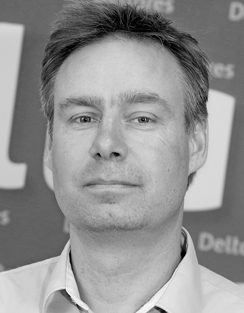
Erwin Roex
(Deltares)
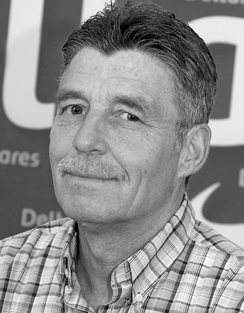
Andre Cinjee
(Deltares)
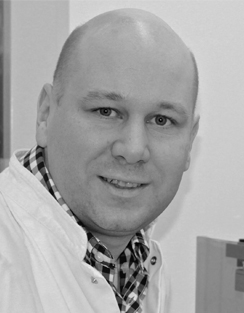
Henry Beeltje
(TNO)




